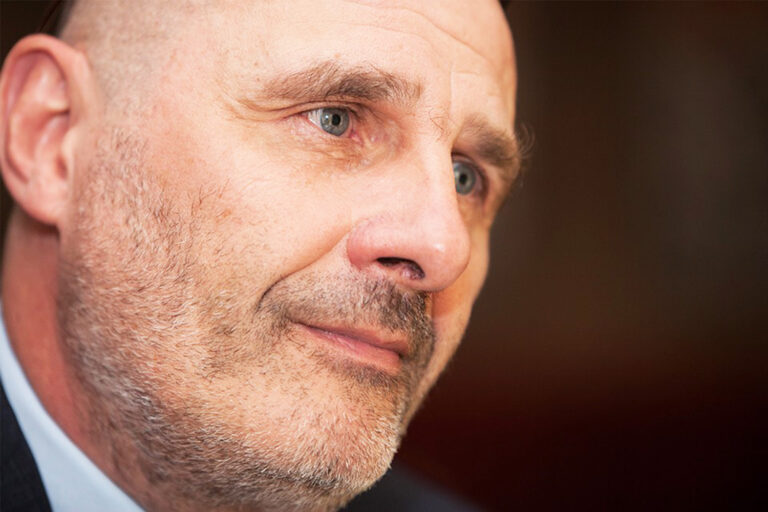Webb Fontaine’s team of international experts and technicians were on the ground for 3 years in Ethiopia to assist the Ethiopian Customs Commission (ECC) staff with the deployment of Webb Fontaine’s eCMS that was designed and customized for this project and rolled out across all operational ECC stations in Ethiopia. It is also available online for all trade users (carriers, declarants, companies, etc.)
The fully paperless e-system caters for social distancing rules without hindering the capacity of customs officers to assess and access submitted documents. In addition, ECC removed the need for physical submission of documents by adopting Webb Fontaine’s facevet Officer Desk module, allowing full digitalisation of documents.
Pascal Minvielle – Executive Director, Technology & Projects Implementation – Webb Fontaine Group is at the heart of Webb Fontaine’s technological innovation strategy. Based in Dubai, UAE, he leads the largest Research and Development centres in the industry in France, Armenia, Philippines and Ukraine. He talked to Capital about the implemnntation of the project. Excerpts;
Capital: Can you tell us what you have done to support Ethiopian Customs Commission?
Pascal Minvielle: In 2015 we were contracted by the Ethiopian Customs Commission (ECC) to digitalize Customs procedures, the project was funded by the European Union. The Customs Commission floated a tender to improve and modernize the Customs procedures for import and exports. Following the tender, we were awarded the contract and started work in 2016.
From day one, this project was a collaboration and partnership with the Ethiopian Customs Commission. Together we reviewed, assessed and then built the new Customs clearance system to address all the project requirements specified by ECC in a Business Project Review (BPR).
The new system has been live and in use for the last two years, and has achieved a great deal for not only Customs and Trade but for the country as a whole. The technologically advanced system modernizes and simplifies Customs procedures. Bringing together faster clearance, risk management, enhanced control through digitalisation, they are now able to have complete and transparent processes, and improved control across the board.
The advantages are clear to see: dwell times are significantly reduced which means the Customs clearance process is two times faster than before. With simpler and optimal processes Customs can clear goods, faster and more efficiently. 
With more control and trade facilitation, revenue has increased dramatically. Ethiopia Customs Commission has been able to increase Customs generated revenue by over 30%, this is a major asset in the context of the economic growth of Ethiopia.
To achieve this, we are proud to have worked hand in hand with the Government during the design and implementation phases as we teamed with the national project team not only in Addis but in all workstations of the country.
Capital: how do you evaluate the capacity of employees of the Customs Commission in terms of the operation of the technology?
Pascal Minvielle: Ethiopia Customs Commission are leading the way in terms of digitalisation. The system is designed specifically on requirements put together by them. Additionally Webb Fontaine has provided more than 1000 hours of training and upskilling for Customs on technical and operational aspects.
They are fully trained and now conversant with risk management techniques, valuation assessment, inspection using the paperless system. ECC is now able to monitor the system and has developed a sense of ownership.
Capital: corruption is the major problem in Ethiopia Customs Commission does your system has on this?
Pascal Minvielle: The system provides complete control, transparency and visibility of all transactions. Goods are now tracked at every step of the Customs process.
Capital: the other problem here in under invoicing, does the system have some kind of way to detect this?
Pascal Minvielle: Customs digitalisation removes all manual steps in the Customs clearance process, this means a reduced chance for errors and fraud. The system itself includes specific tools for tracking irregularities and under invoicing practices.
For this purpose, ECC is actually using one of the system modules called Value Declaration Details or VDD which we have installed and customized for them; it is controlling online all prices which are entered by the traders, so if you declare let’s say 10,000 birrs within your Customs declaration, the system will look automatically into a data base of previous entries spotted though Ai and will send an alert to the customs assessor which will increase back the price so yes, there are internal valuation controls within the system which prevent under valuation, this is one of the contributor that increase revenue by 30 percent. It’s more focused on valuation control and transparency and also trade facilitation.
Capital: Is there anything you want to add?
Pascal Minvielle: Ethiopia is the second most populous country in Africa that has huge economic growth, we strongly believe this country is at the forefront of modernisation and digitalisation in the region. We are proud and humbled to work with such a fantastic team of experts at the Ethiopian Customs Commission. What we have achieved together, the vision that the Ethiopian Customs Commission have is an honour to be a part of.




